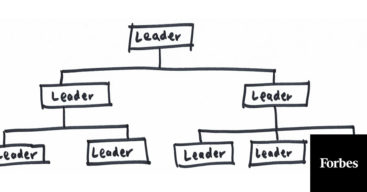Whether or not we take a risk in a given situation depends, in large part, on where we focus our attention as we weigh the pros and cons. If we focus on the upside of risk taking, we’ll feel pulled to take the risk. If we focus on the downside, we’ll feel pushed not to take the risk.
Unfortunately, our focus isn’t derived from a rationally selected set of data. When we’re making choices, we are all dealing with cognitive biases—ways in which our minds selectively pick out only certain pieces of information to pay attention to. One bias in particular has a significant impact on risk taking.
In the late 1970s two cognitive psychologists, Daniel Kahneman and Amos Tversky, employed a series of simple choice experiments in order to understand idiosyncrasies in the way people make decisions under uncertainty. Their research uncovered what they called the loss-aversion bias. Put simply, they found that human beings hate to lose. We hate to lose so much that we’ll do just about anything to avoid it, regardless of whether or not our actions are in our best interest.
To illustrate the loss-aversion bias, consider the following example.
Imagine that you’re a doctor who’s in charge of distributing a vaccine during a serious flu epidemic in which 600 people have become ill. You’re faced with a choice between the following two programs:
- Program A: 200 lives will be saved.
- Program B: There is a one-third probability that 600 people will be saved and a two-thirds probability that no one will be saved.
Which do you choose? (Pick one before reading on.)
Now imagine that you’re that same doctor during the same epidemic, but this time you have a different choice of programs:
- Program C: 400 people will die.
- Program D: There is a one-third probability that no one will die and a two-thirds probability that 600 people will die.
Which do you choose? (Pick one before reading on.)
You might already have figured out that the two sets of choices are the exact same options, presented differently. Kahneman and Tversky presented these exact scenarios to two groups of 150 doctors. One group had to chose between Programs A and B, and the other group had to choose between Programs C and D (unlike you, they didn’t have the advantage of seeing both pairs together). The results were astonishing.
- In Group 1: 72 percent chose A (avoid risk) and 28 percent chose B (take risk).
- In Group 2: 22 percent chose C (avoid risk) and 78 percent chose D (take risk).
How could that be? Programs A and C were exactly the same, and so were Programs B and D. Why were the results so drastically different? Why did 75 percent of the doctors want to avoid taking the risk in the first scenario, yet 75 percent wanted to take the risk in the second?
The answer lies in how the information was framed to focus the doctors’ attention. More specifically, it lies in how the possible loss was framed, which Kahneman and Tversky found is the strongest motivator of behavior under uncertainty.
The first group of doctors was focused on a sure gain—200 lives saved. Loss-aversion bias made them less inclined to take a risk because they didn’t want to lose those 200 lives. A doctor might think, “Why would I risk losing 200 people when I know I can definitely save them? That seems irresponsible.”
Conversely, the second group of doctors was focused on a sure loss—400 people will die. Loss-aversion bias made them more inclined to take a risk because they didn’t want to lose those 400 lives. In this case, a doctor might think, “How can I let those 400 people die without at least trying to save them? That seems irresponsible.”
Ironically, both groups of doctors had the same goal—to save lives and avoid losses. Yet because their attention was focused differently, it led them to make very different decisions.
So, what are the implications of this insight for daily life?
We choose where to focus our attention every day,
and
WHERE we choose to focus our attention matters—big time.
When you choose to focus on what you might lose by taking risks—that is, what you already have (like the first group of doctors)—it makes risk taking seem like a bad idea. When you choose to focus on what you might lose by not taking risks—that is, what you don’t already have (like the second group of doctors)—it makes risk taking look like a smart idea.
With all we do we need to keep this cognitive bias in mind, and choose wisely.
Excerpted and adapted from Taking Smart Risks



